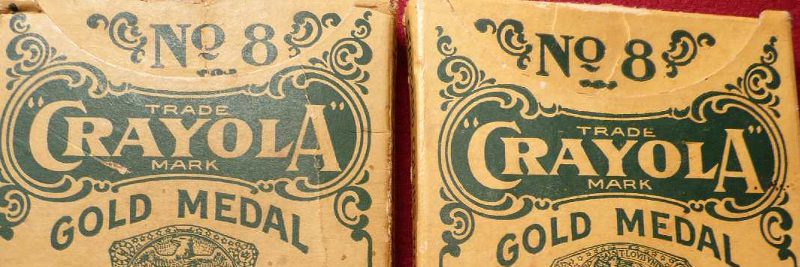Crayons have long been part of a child’s development. They allow for safe coloring that doesn’t permanently ruin floors or walls, can be tolerated today as a non-toxic item if necessary, and provide everyone with a lot of fun. The story of the Crayola crayon actually begins in 1864 when a man named Joseph Binney founded a factory to create lamp black and charcoal. Binney’s son, Edwin, and his nephew C. Harold Smith stay in business together and develop natural gas, carbon black for car tires, and barn paint.
In 1900, the black carbon that they were using was produced as a slate pencil for schools in their local community. They were inexpensive and their creation earned the partnership a gold medal at the 1900 Paris Exposition. Teachers, however, also wanted something colorful that their kids could use to explore art. That’s where the crayon really took shape.
The Crayola Crayons Were Invented In 1903
The first box of crayons that were produced by this business partnership had eight colors and were made from wax. The name of the coloring sticks actually came from Edwin’s wife and is a combination of two French words that when directly translated means “greasy chalk.” Orange, red, green, yellow, brown, violet, and black were the first colors.
The inventions of Binney and Smith didn’t just stop there, however, because they saw that teachers had a great need for other tools to help educated children. They introduced the first dustless chalk, which won them another gold medal in 1904 at the St. Louis World Exposition. They introduced the sharpeners that you can still see on the back of Crayola boxes today in 1920. One of their most notable creations, however, was the Crayon, Watercolor, and Craft Institute that promoted product safety in the arts.
Over the Years, Crayola Began To Expand
The first “modern” box of Crayola crayons appeared in 1949. It contained 48 different colors of crayons and placed them in the raised platform boxes for the first time. The 64 color assortment first hit the market in 1958 and just 3 years later, the Binney and Smith combination was strong enough to become a public company. From there, the business as an entity began to continue improvements to the artistic products that were made in-house while looking for the rights to other unique products, such as Silly Putty.
The message from Binney and Smith is crystal clear: any products that are designed to be used by children must be created in the safest manner possible. There must also be open lines of communication that allow parents to seek out help should they need it. To that extent, the toll-free hotline that Crayola established in 1986 was one of the first that was implemented for the sole purpose of having honest, open dialogues with their customers.
The next time you see some art that is done in wax or watercolor, you’ll have Binney and Smith to thank for that. Now go and color, stay within the lines if you want, and have some fun.
Strong proponent of individual liberty and free speech. My goal is to present information that expands our awareness of crucial issues and exposes the manufactured illusion of freedom that we are sold in America. Question everything because nothing is what it seems.




















